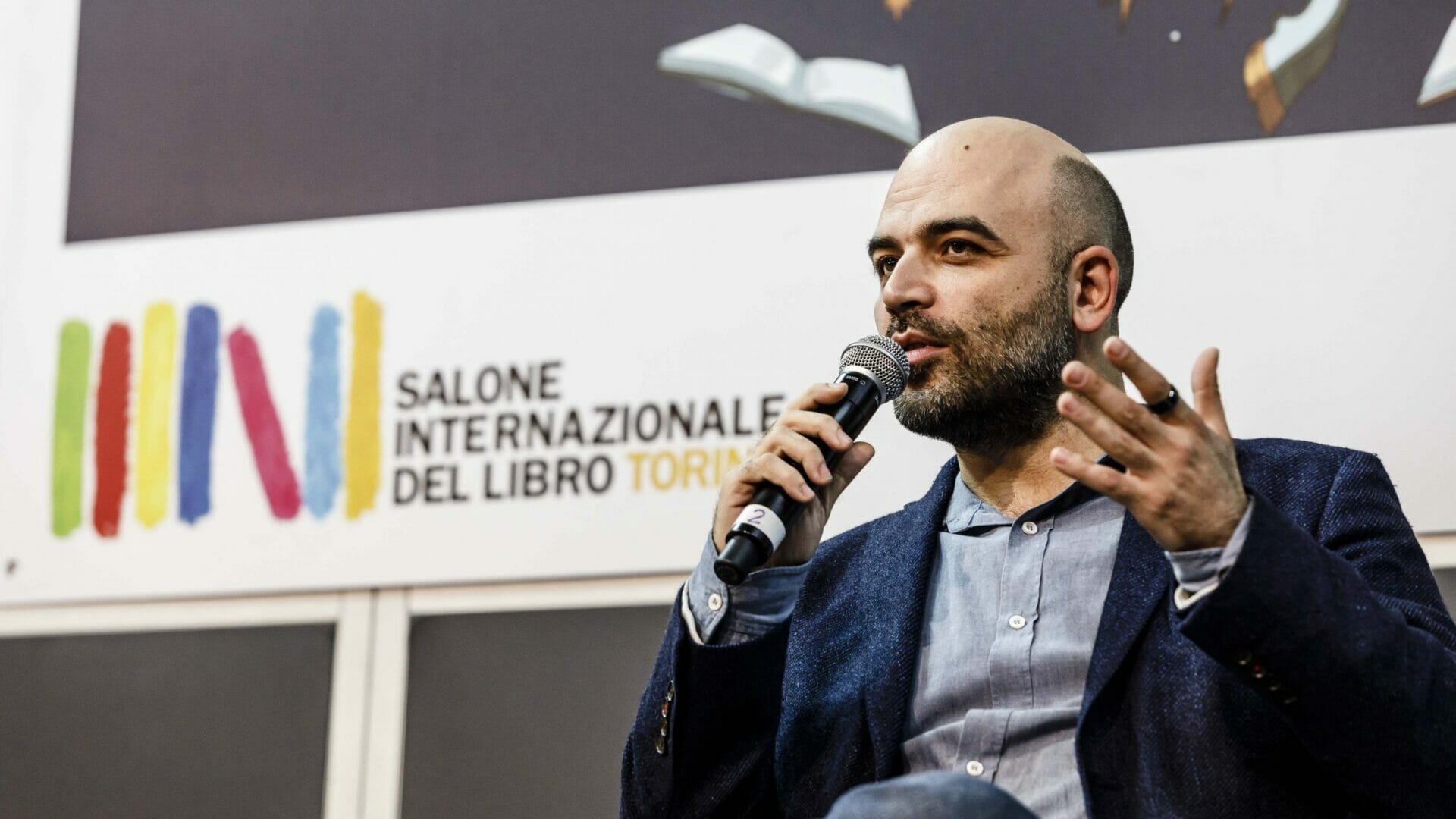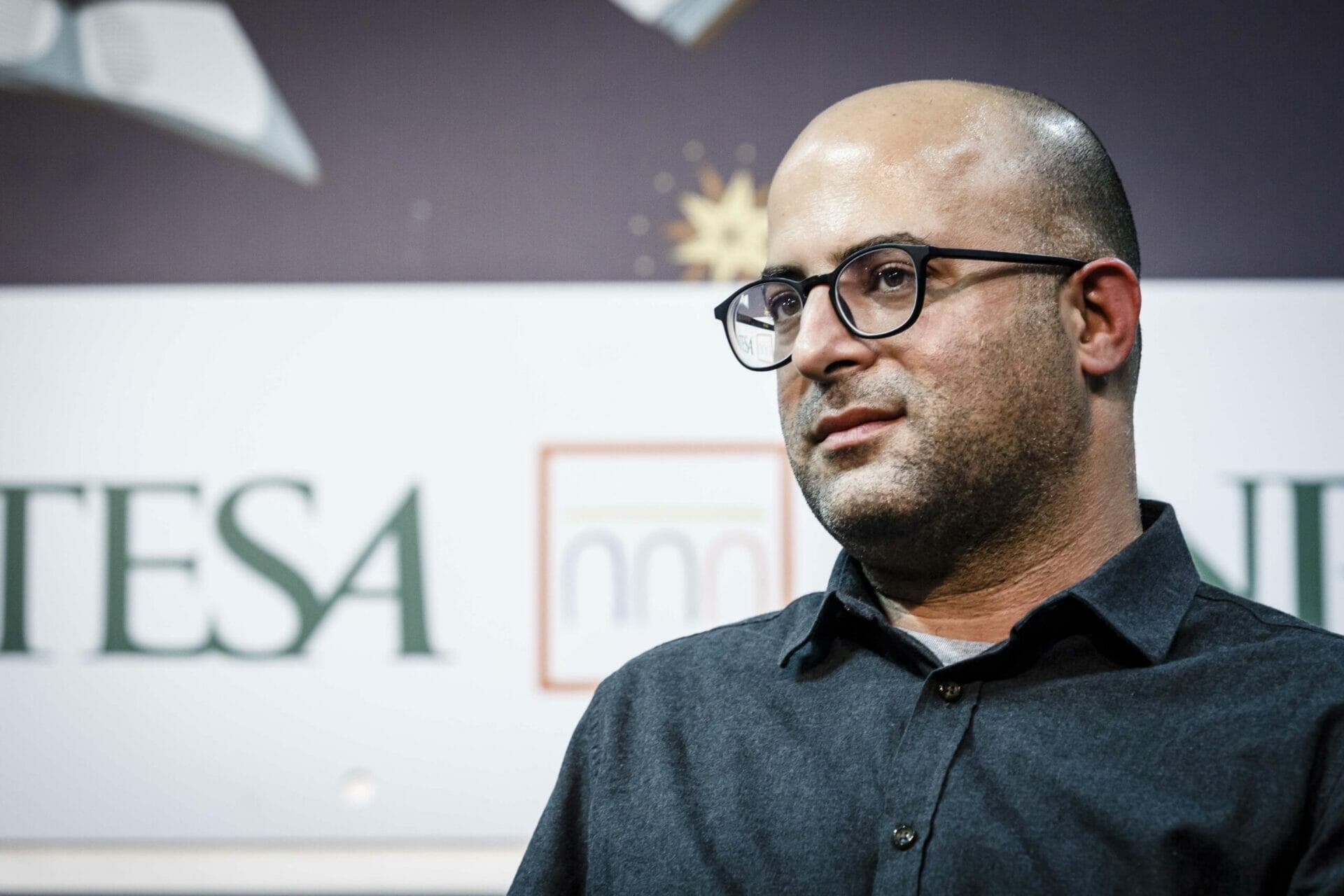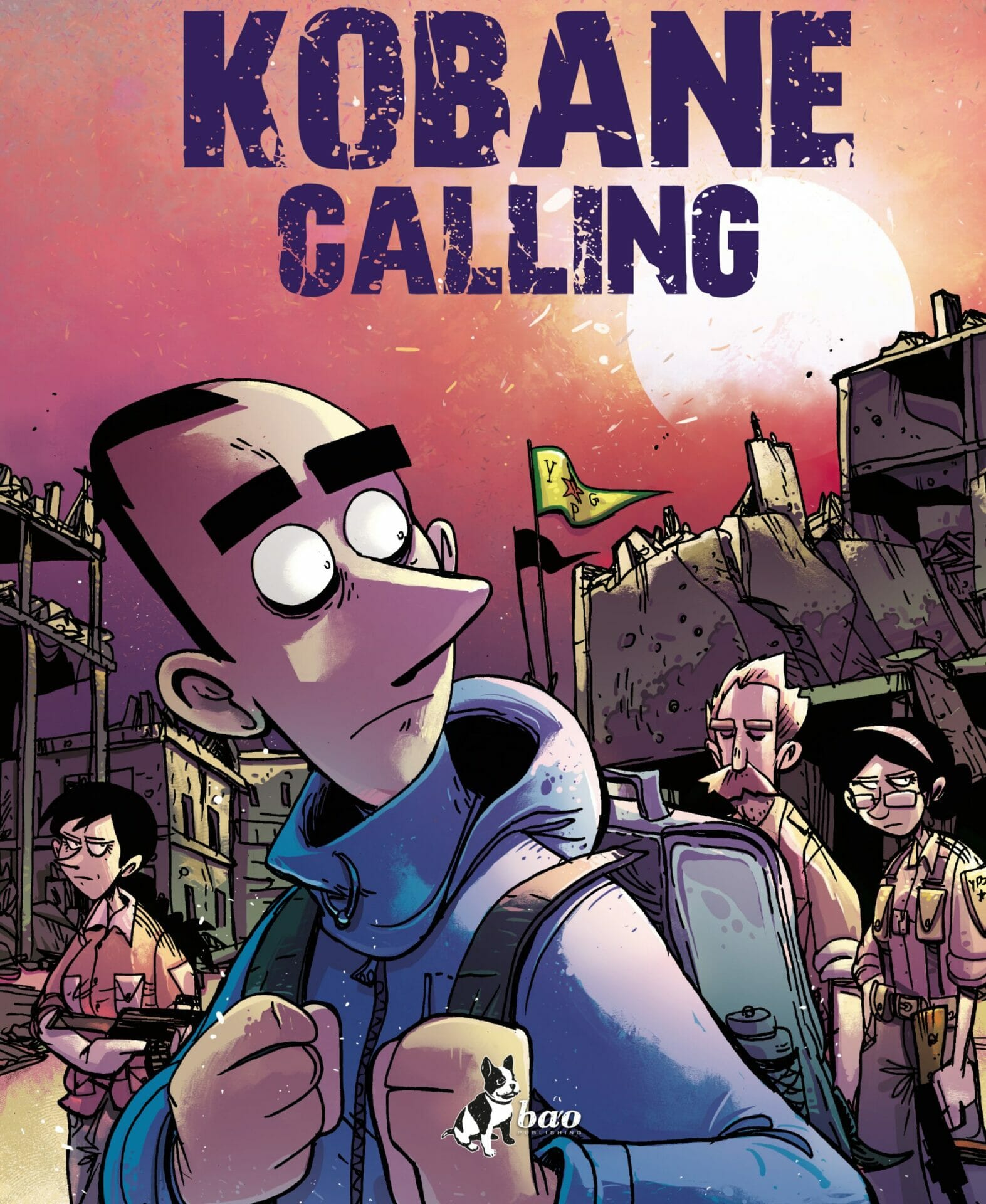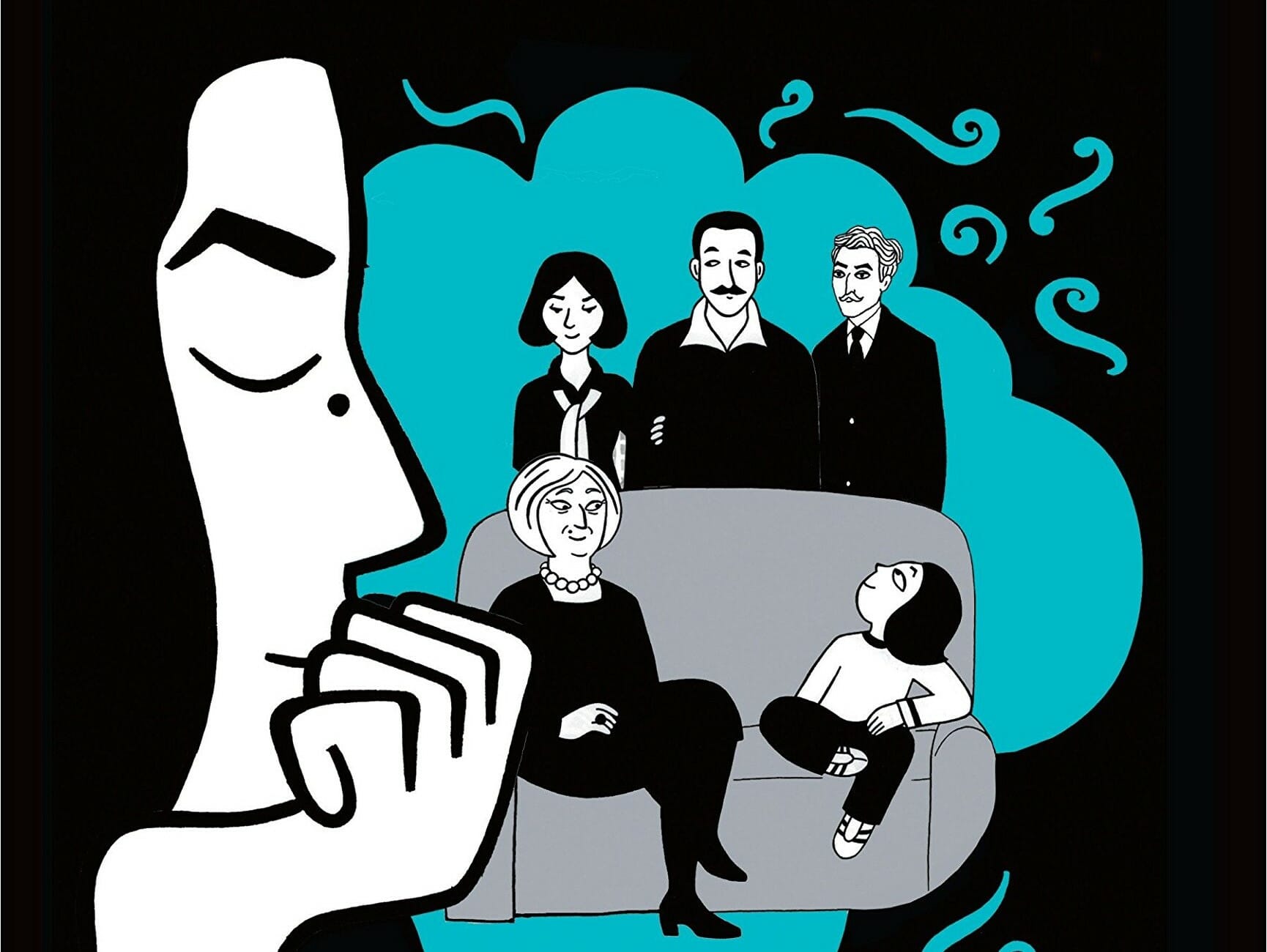
An enthusiastic round of applause welcomed Roberto Saviano when he stepped into the conference room. He had come to The Turin International Book Fair 2021 on October 17th to present his first graphic novel, Sono ancora vivo (I am still alive). With him, there were comics artist and co-author Asaf Hanuka and BAO Publishing CEO Michele Foschini.
This comic book talks about a lot of things, but it revolves around two elements: the idea of wounds and the power of words. As Saviano said, it wasn’t meant to be just an autobiography, but also and most of all a story of suffering, resistance, lack of personal freedom, injustice. “I wanted to tell the reader: look at me to look into yourself, if we share the same wounds”. But this story, the story of a man who has been living under police protection for fifteen years because of what he has written, is also proof of the power words and knowledge hold.
Wounds as slits to look into yourself
The graphic novel starts with a little preface, where Saviano pins down two kinds of stories. There are the ones ending with the death of the protagonist and the ones ending with their victory and come back to the people they love. Real-life, though, takes place in the middle. Our condition is of wounded ones, not entirely defeated and never victorious. The wound is a universal state. Everybody gets pushed down by life events, but then keeps on going further, wounded. The way everybody handles their own wounds defines the person they are: how they treat them, how they heal them defines the kind of life they will live. The wound becomes a slit through which you can peek into a person’s past. In Italian the word for “wound” is “ferita” and “slit” is “feritoia”, making for elegant assonance. This graphic novel, Saviano says, is the representation of my wound.

Why comics? The making of Sono ancora vivo
Foschini started the conversation with Saviano and Hanuka asking about the choice of comics as narrative form. “I couldn’t write a book about my life. It would have been too painful, too confused. Comics were what I needed, they helped me tell my story”. Saviano made a distinction between comics and books. The latter demands the reader to imagine everything the reader finds on the written page. Everyone will picture something different in their mind. Comics, on the other hand, convey exactly what the author intended. In doing so, the illustrations of Hanuka were fundamental. His style combines a very realistic trait with the ability to create strongly metaphorical and striking illustrations.
One of the strengths of comics is that the single panel contains a lot of elements that strike the reader at the same time. In so doing, they can convey powerful meanings without having to explain too much. The cover, for example, shows Saviano half-immersed in water which is actually made out of his tears. A sea of tears he never wanted to let out since the release of Gomorra in 2006, and tears representing the burden of a life deprived of freedom. “Crying is a talent, ancient Greek heroes used to cry. I don’t not because of silly reasons like appearing manly or whatsoever, but because I know it’s not the right time yet. Plus, I feel like, if I would start, I couldn’t stop” confessed Saviano.
What to say, how to say it
Throughout the comic book, Hanuka depicts Saviano shape-shifting into a Minotaur or in golden armor, depending on which emotions they wanted to describe. “Comics get to the reader directly. I talked with Asaf about my ideas and fears, of what I wanted to say, and he helped me to find the right way to do it. Comics are also more convincing than simple words, I believe. For example, I feel embarrassed when I talk about the risk of being murdered. It triggers complicated feelings, I immediately think people won’t believe me. Using comics, it’s different. The illustrations are there not so much for proving a point but to convey feelings, my feelings”.
Sono ancora vivo is similar to a personal diary, maybe recalling Persepolis by M. Satrapi, and it is as if it talked about what happens after the end credits, off stage. The point is not to impress the reader with thrilling scenes, but to give them an insight into what it entails to live under police protection for years. And, in general, to express the anger and the frustration of living in a situation you didn’t ask for yourself. The final result is a collection of episodes, each one exploring a different desire, fear, hope.

The power of words and art
Is it possible to be happy if we are not free? Hanuka answered this question telling that, swapping places with Saviano, he would probably rely on art to fight the pain. Art is a sort of response to discomfort. Everyone experiences different kinds of distress, making it a never-ending source of stories. However, art, and the words it uses, are also a tool capable of changing things, of reshaping reality. They create a bond between the artist and the audience, creating a kind of community. In the case of Sono ancora vivo, the narration of Saviano’s wound is a way to make a connection with whoever feels oppressed.
The search for this bond, connected to the desire to make right what feels wrong, is what made his books so powerful. It is also what criminal organizations actually fear. “What they fear the most is not journalist’s reports or police chasing them down,” Saviano said. “It’s people knowing how their system works”.
This fact was proved by the Rome Tribunal’s verdict of May 24th, 2021, which sentenced to jail Francesco Bidognetti, a Camorra boss, and his lawyer Michele Santonastaso. This sentence was the result of threatens perpetrated by the two toward Saviano and the journalist Rosaria Capacchione in 2008, during the “Spartacus” trial. At that time, the lawyer Santonastaso “exhorted” the two journalists to exclusively tell facts, without making conjectures on their wider meaning. This sentence is proof that words can make a difference and, because of that, we always have to protect and cherish our right to express ourselves and share knowledge.








